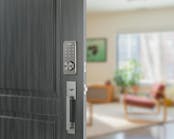A steady flow of small-ticket sales is vital to the success of any retail business. It's as true for a lock shop as it is for a mobile locksmith. These items fall into the category of impulse items and refer to unplanned purchases.
In the store environment, the price point drives an impulse purchase. Typically, items priced under $10 are classified as impulse items because most people will purchase these items without much thought or consideration.
Many small sales can have a huge impact on your store’s revenues and profits. Yes, the higher-priced items are important to your business. Yet, multiple small sales are, in the end, just as important as expensive products and services.
Consumer emotion drives an impulse buy: "My grandson will love that key chain!" Maybe an item will help a customer anticipate a need: "I'd better grab that key tag rack to help our family organize our keys." Often it is innovation that drives the purchase: “What a neat way to hide a key!”
Retail Environment
While you are cutting keys, you want your customer to browse the shop and feel comfortable about making a small purchase. Grocery stores go to great lengths to keep a shopper in the store as long as possible. That’s why milk, the most common and frequent grocery store purchase, is always in the back of the store. Studies have shown that when a customer lingers in a retail-intense environment, a customer spends—to the tune of $20 in unplanned purchases every 10 minutes.
Selling small-ticket items makes sense and it works. Particular attention should be paid to those products that lend themselves to impulse sales—like key tags, key tag racks, key hiders, padlocks and specialty keys. These items should be clearly displayed and ready for purchase.
Indeed, the small-ticket display area is generally much busier than a display of big-ticket items. If you want to sell an expensive item like a safe, displaying lots of small-ticket items is critical. By taking time to browse through the items in the under $10 price range, your customer is more likely to return for a bigger purchase at a later date. In this manner, the value of impulse items goes beyond the immediate sale.
As a lock shop, there are some steps you can take that will attract everyday impulse sales. While much of what happens in stores is beyond your control, you can still increase your chances of merchandising appeal. The key to success is recognizing that placement and merchandising are two major impulse-purchase drivers. Bright colors that form a pleasing and uniform-looking display are imperative. Having the product within reach is critically important.
Well-designed packaging with crisp, bold graphics and bright colors will invite more than just a glance. Great packaging relates good information regarding the product--the brand, what the product is, a few benefits of use, and why it's needed.
A well-constructed display made with an attention to detail will enhance the product offering and suggest to the customer that the product on the display is better quality than something that is just thrown together, or worse, just hung randomly on peg hooks with no thought of organization.
Last, be sure your store is clean and your product displays are bright with bold graphics. Shoppers are likely to remember both pleasant and unpleasant experiences in a store. And they are very likely to tell several of their friends about their experience in your store.
Mobile Environment
Every time you provide a lock out service, you have a face-to-face opportunity with your customer to offer an add-on, impulse sale. You can calm a frantic mother at a roadside lockout: “Would you like a Collapse-A-Cone™ for your trunk in case you have another roadside emergency?”, “I have these new Remote Skins for that broken transponder of yours” or simply provide an ounce of prevention with a Key Hider for a car. You will find real-life experiences that require a need for these products.
Additionally, consumers get the opportunity to benefit from your product knowledge and expertise and a chance to hold the product to alleviate their pre-purchase fears. When you let consumers "try before they buy," they are more likely to purchase an unplanned item.
While packaging and merchandising may be less important in a van, it is still significant that your customer have a pleasant experience in order to consider an add-on purchase.
Maximize Your Impulse Sales
In order to benefit from the value the impulse items can provide your business, a few key steps must be taken to create a welcoming retail environment for your customers:
- Have the product within reach. This point is critically important;
- Offer a broad selection of product for your customers. A locksmith once told me that no matter what he thought would sell, his customers wanted something else. He started with a small retail display one year and the next year he asked for the largest retail display we had. His sales and profits have increased accordingly;
- A well-constructed display made with an attention to detail will enhance the product offering and suggest to the customer that the product on the display is top quality;
- Bright colors that form a pleasing and uniform-looking display are imperative.
Jan Howard-Merutka is vice president of marketing for Lucky Line Products Inc. For more information, visit www.luckyline.com.






